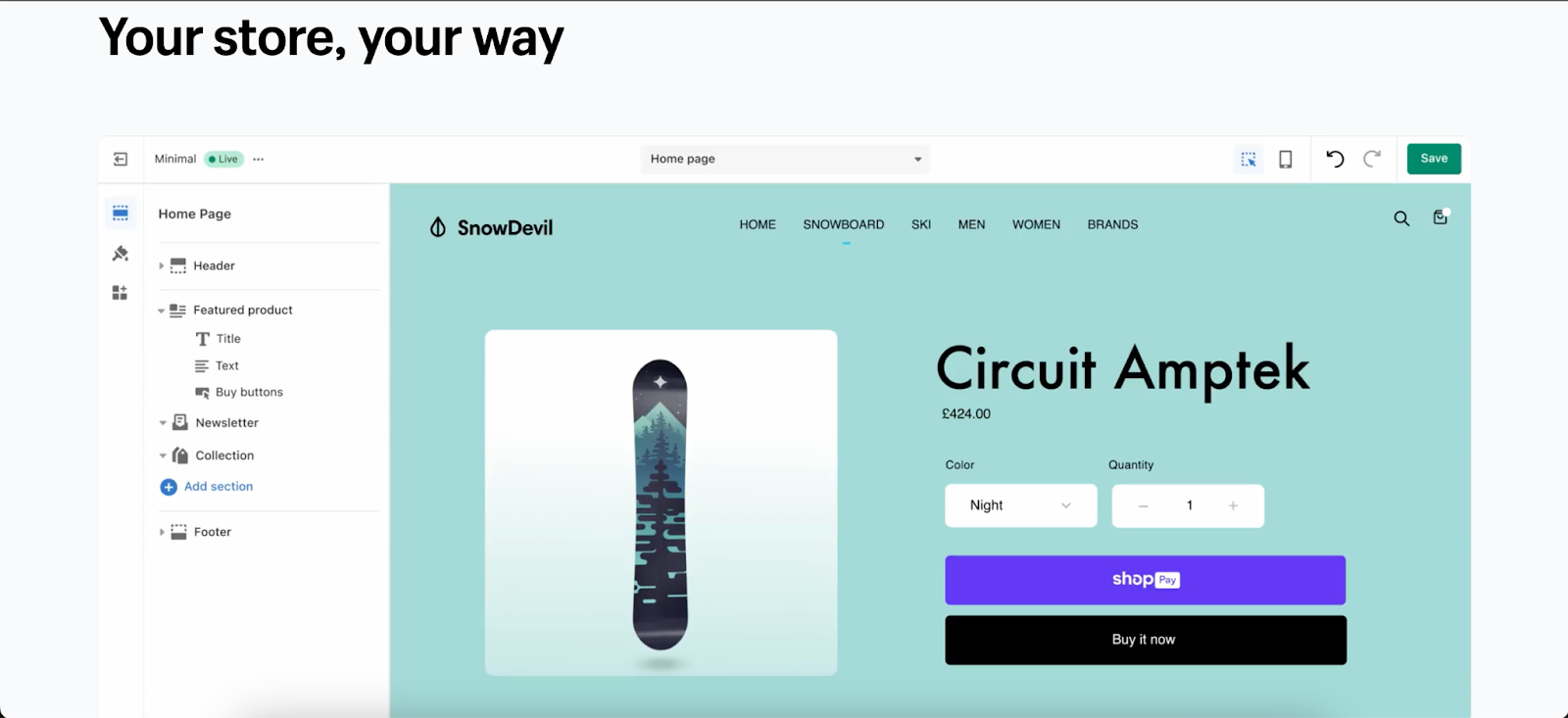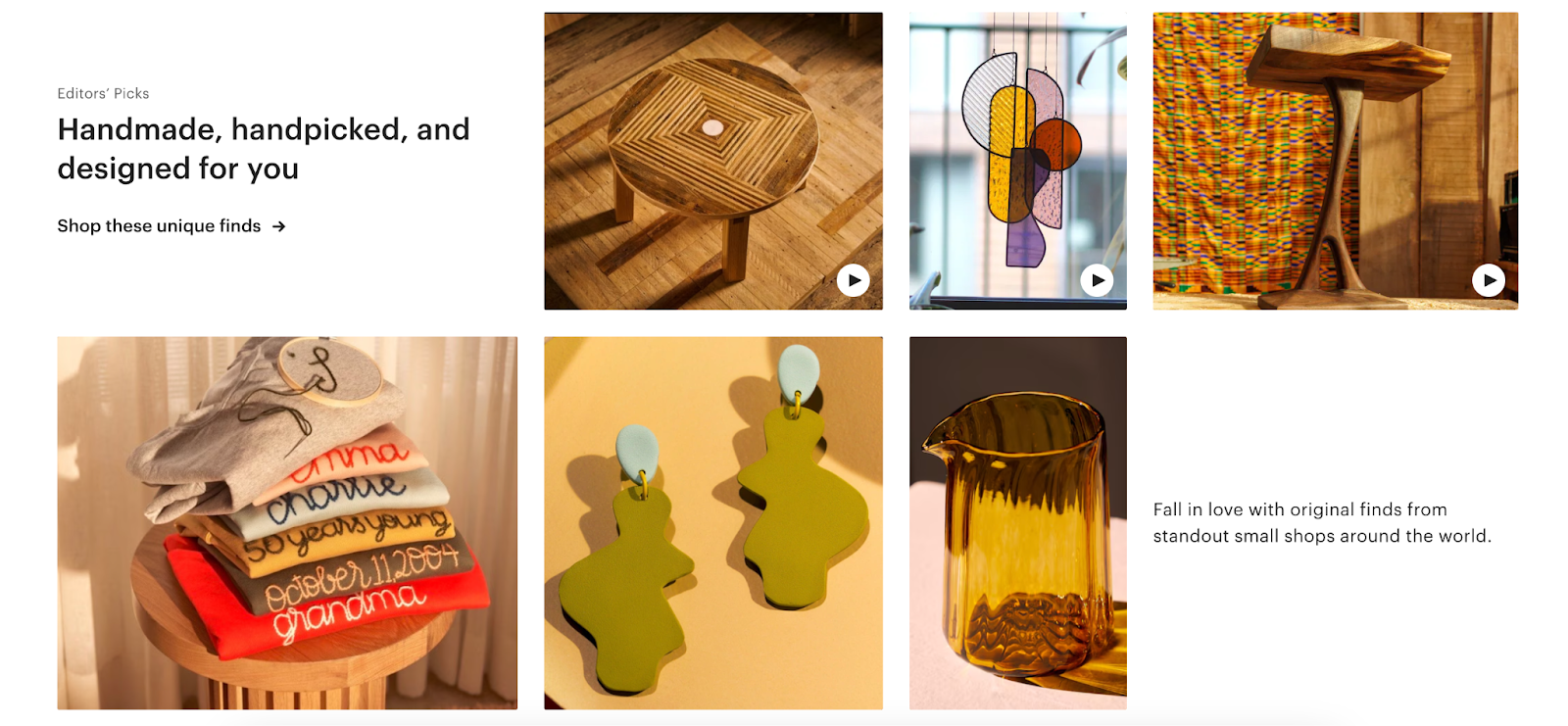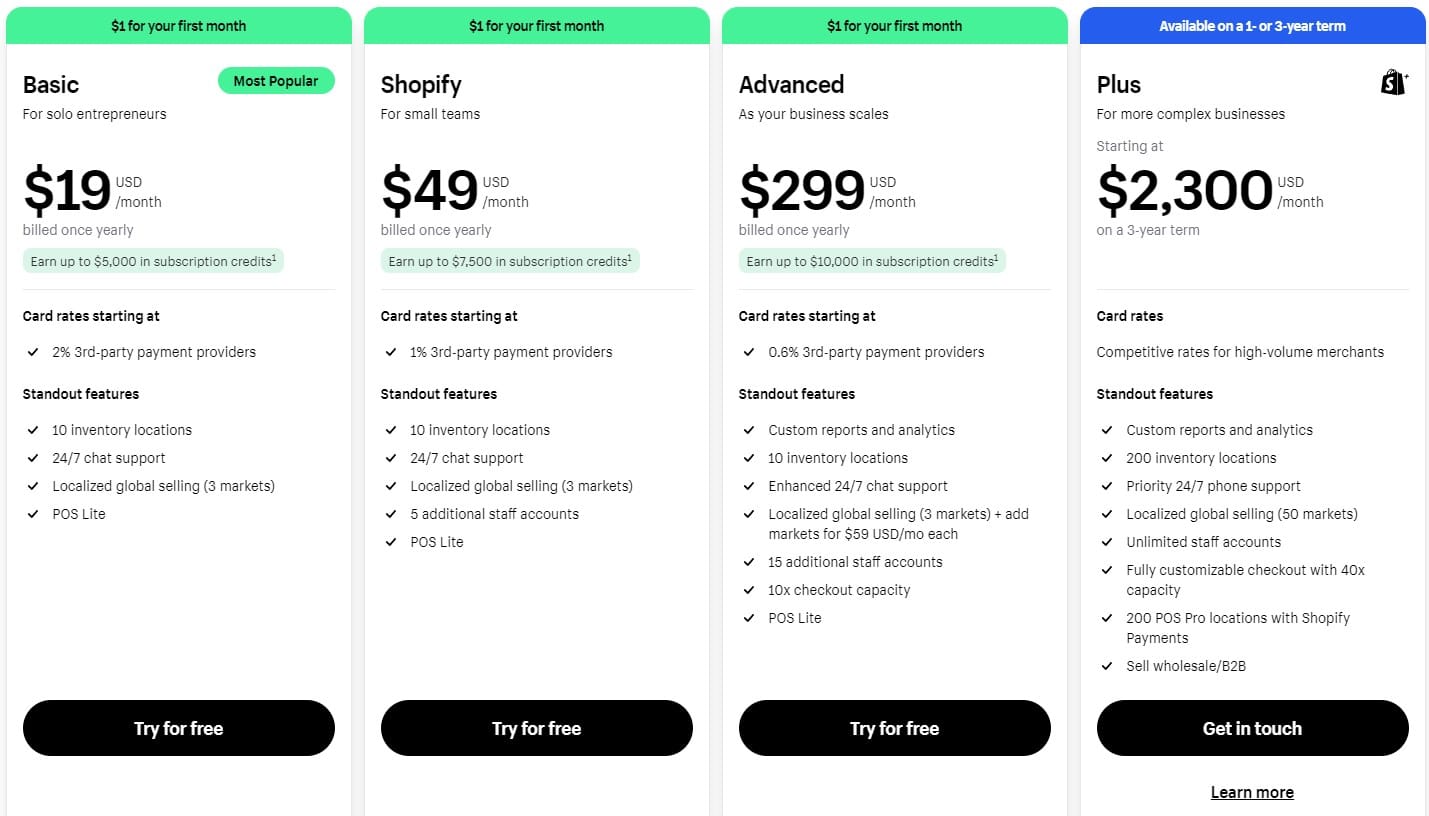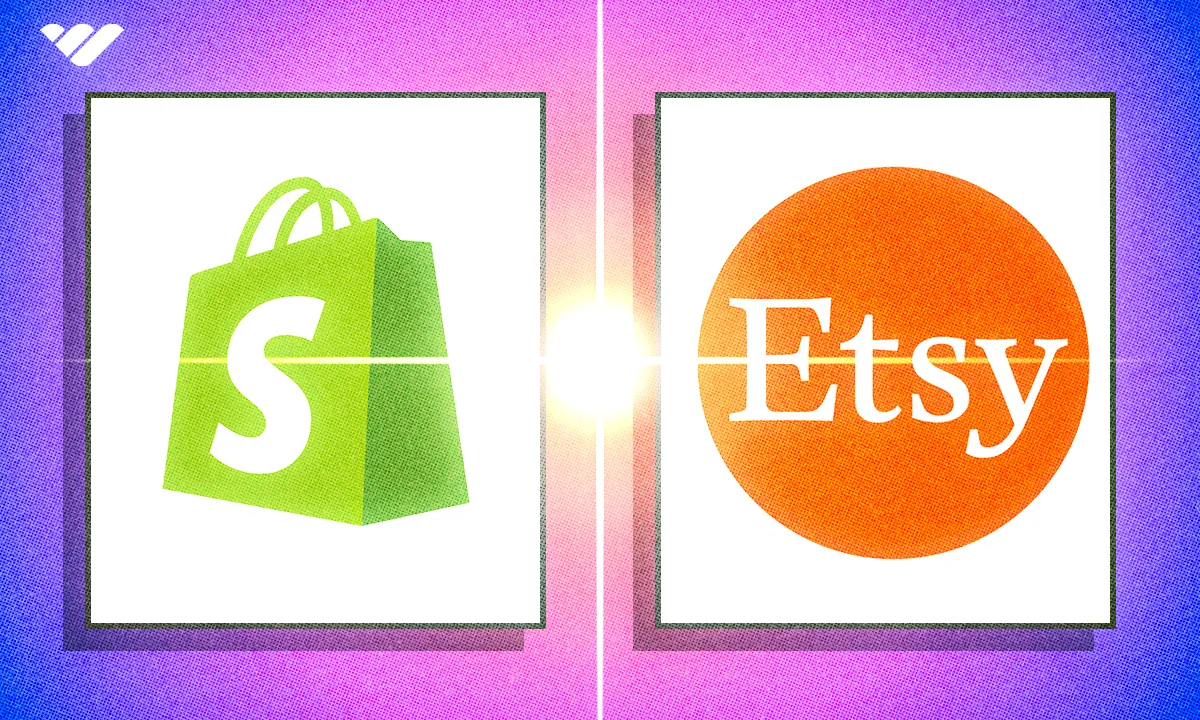Want to discover the difference when it comes to Shopify vs Etsy? Discover everything such as how much it costs, how simple it is to set them up, and— most importantly— which one is the best fit for your small business.
Key takeaways
- Shopify requires monthly subscription fees starting at $19, while Etsy charges per transaction.
- Etsy hosts over 9 million active sellers competing for 96 million global shoppers.
- Shopify offers 24/7 customer support through multiple channels including phone and live chat.
- Etsy limits store customization with generic templates, unlike Shopify's 200+ customizable themes.
- Shopify provides thousands of integrations while Etsy offers limited third-party connections.
If you’ve just entered the ecommerce world, you’ve probably heard some of the big names. That’s where the debate between Shopify vs Etsy comes in.
It’s become evident that to remain competitive, entrepreneurs need to go for platforms with the latest technology to create their online storefronts. So, we’ve compared Shopify and Etsy, two of the top ecommerce platforms.
In this article we've gone over everything such as how much it costs, how simple it is to set them up, and— most importantly— which one is the best fit for your small business. Let’s get started with what these can do for you.
Shopify vs Etsy at a glance: What should you know?

Etsy serves as a platform for independent sellers to sell almost anything on their online marketplace (as long as it meets the creativity standards), whereas Shopify is an ecommerce platform that allows businesses to design and run their online stores.
You’ll find that it’s more time-consuming to set things up on Shopify. But you can design every aspect of your online store — such as your brand’s online presence, your store-front look and how you’re advertising and selling your products.
On Etsy, you’ll find the target customers you’re looking for — but there’s also an influx of competitors. All you have to do is put up your products on the website and market them to sell them.
What is Shopify?
Founded in 2006, Shopify is an ecommerce platform that enables retailers to launch their websites. Currently, the website hosts over 2 million online stores that are live and running.

If you’re interested in using Shopify for a custom storefront, you have to pay a monthly subscription fee. With an ecommerce website of your own, you can upload products, take payments from customers, and monitor order delivery.
You’ll find that many tasks have been automated, simplifying marketing and store upkeep for those who haven’t had that experience. Shopify also offers hundreds of integrations that let you work with third-party apps which increases the functionality of your company.
- How to sell digital products on Shopify
- The best Shopify alternatives (free and paid)
- Shopify SEO: Game-changing tips to supercharge your store
What is Etsy?
With over 9 million active sellers in 2023, Etsy is a well-known online marketplace that provides your store with a sizeable customer base to draw from, eliminating the need for you to worry about drawing attention to your products through marketing campaigns.

The website started in 2005 with a focus on three product categories: handmade, vintage, or craft goods. Now, it has expanded to other areas as well (like digital products) but these types of products are most commonly found on the site.
Moreover, it has a big and active customer community, which is focused on handcrafted goods. In fact, almost 96 million shoppers were active on Etsy globally.
- Etsy alternatives for selling crafts online
- Best Etsy side hustle ideas
- Best Etsy dropshipping products (and how you can make money with them)
How do the platforms compare: Shopify vs Etsy

Now that you understand what these platforms are and have an idea about their functionality, let’s put Shopify and Etsy head-to-head to understand which is better for you.
Ease of use
You don't need to spend a lot of time learning how to use or configure Shopify because you have 70 no-code themes or layouts to use. Plus, if you’re thinking about customizing your store, you have that option as well.
Starting a Shopify account merely requires a few quick questions to learn about you and provide services that meet business needs. You can easily launch your store, add product photos and descriptions, configure shipping and payment methods, and more. Plus, you can navigate the dashboard easily as the majority of pages can be accessed from there.
For those who might require assistance using the platform, Shopify provides excellent customer support in the form of lessons and guides too.
What about setting up the Etsy store?
You can quickly learn how Etsy operates even if you have no prior experience starting or running an online store.
Whether you're selling handcrafted goods, vintage goods, or supplies for arts and crafts, you have to make a new listing for every product you sell on the marketplace.
As soon as you sign up, your new Etsy shop opens for business and you'll be able to begin selling goods. You still need to upload your products, write descriptions for them, take photos of them, and all that. They make the setup process simple with their tutorials and forums, but some of the videos are outdated.
Store customization
With more than 200 themes, a majority of which are premium, Shopify allows you to alter the content of the home page after choosing a theme.

To further enhance user experience, all Shopify themes are optimized for search engines and are responsive to mobile devices. Though some themes require reformatting, you can quickly switch between them whenever you'd like. You even have the option to work with Shopify Experts to develop Shopify themes or to build them yourself.
Comparatively, you’ll find that Etsy's store designs are generic, which makes it hard to stand out from the competition. It’s also difficult to modify your store because they all use the same template. However, Etsy will always use its best efforts to maintain a neat, responsive, and appealing store, so you can be sure of that.
Etsy also offers a website builder named Pattern with a higher monthly fee. By using that, you can use custom domains to build and personalize stand-alone ecommerce websites.
Customer support
Shopify offers 24/7 assistance and support to their customers. In addition to their extensive Shopify Help Center, you can reach out to them via phone or live chat around the clock. They also provide other resources such as how-to guides, email support, webinars, online courses, and even personalized support from ecommerce specialists.
If you’re having any issues with your Etsy store, you can visit their Help Center. They also offer you support over newsletters and forums, and they even have an Etsy Seller Handbook. Unfortunately, you'll have to submit a help request instead of trying to reach someone as they don’t have any direct contact channels. Even with email, it can take you two to five working days for a response.
But these aren’t the only factors you should consider when choosing Etsy vs Shopify.
Shopify vs Etsy fees
One of the most important things you should consider while setting up your online store is how much will it cost.
So, let’s compare Shopify vs Etsy fees:
Well, Shopify offers a 3-day free trial with no credit card sign-up required. Plus, you only have to pay $1 for the first month regardless of the plan you choose.

- Basic: Starts at $19 per month and includes two employee accounts, a website for listing things and selling them online, and round-the-clock customer support.
- Shopify: Costs $49 per month and you’re able to get five possible accounts, reporting capabilities, lower credit card rates, and point-of-sale benefits.
- Advanced: Charges $299 per month, with even lower credit card rates along with fifteen accounts and other operational benefits.
If you’re looking to sell wholesale, you can choose the Plus plan which costs $2,300 per month and is only available in a one or three-year lease. Added bonus: you’ll also have priority customer support.
Shopify accepts credit cards such as Amex, VISA, Mastercard, and other standard payment channels but it has a credit card fee. Moreover, if you use a third-party payment channel, you will be charged transaction fees according to your chosen plan: 2% for Basic, 1% for Shopify, and 0.6% for Advanced.
But if you use Shopify Payments, a payment solution that Shopify offers, it costs less than third-party payment gateways.
Etsy doesn't charge a monthly fee; instead, you will be charged extra for each transaction. For every item you put for sale on Etsy.com or its mobile apps, you will be assessed a listing fee of $0.20. You’ll also have a transaction fee of 6.5% of the price you list for each item plus the cost of shipping and gift wrapping will be deducted from your earnings.
For US-based vendors, payment processing fees are 3% + 25 cents for each transaction. If Etsy must exchange foreign currencies for US dollars, currency costs will be charged.
Etsy does have a Plus plan at $10 per month, which can be useful for those looking to expand their shop. Their benefits include credit allocation for listings and Etsy ads per month, discounts on a personalized website, and savings on packaging and marketing supplies.
If you’re planning to use Etsy Pattern, you’ll have to pay $15 monthly to set up your website with a unique domain name while still listing products on Etsy. So, while there is no monthly payment, there are many different fees that can quickly stack up.
- Etsy statistics
- Is it worth it to sell on Etsy? Everything you need to consider before joining the popular ecommerce platform
- Best digital products to sell on Etsy
The biggest differences between Shopify and Etsy

While going through the sections above, you’ve probably already found some differences between Shopify and Etsy. Let’s go over the table below for a better overview:
| Shopify | Etsy | |
|---|---|---|
| Pricing & fees | Although Shopify has a free trial, you'll have to subscribe to a paid plan within 3 days and it can get expensive with more accounts and all the fees. | Etsy's standard plan is free to use, and you can use most of the features available with that. However, it does have a significantly higher transaction fee. |
| Store design | You can customize your store even further with the platform's templates and layouts. It's possible to modify the main typefaces, colors, and pictures on the website as well. In fact, you even have the option to make your custom theme. | You can design your Etsy storefront with a simple layout but it can't be customized like Shopify. However, you have the option to use Pattern but it costs $15/month. |
| Help & support | On Shopify, you can find many channels to communicate with their support team. Plus, they have an abundance of resources that can cover any problem you may have. | Etsy does have a detailed help center and guides as well. However, you'll also have to wait to get a hold of them as they don't have any direct lines. |
| Integrations | Shopify is known to have thousands of integrations with multi-selling platforms, customer support websites, payment channels, and more. It even has its own POS service, Shopify Payments. | Comparatively, Etsy is more limited in its integrations and it doesn't allow for a native POS so you'll have to use a third-party app. |
So you might be wondering which should you choose Shopify or Etsy?
Shopify or Etsy: Which is Best for You?

You already know that both Etsy and Shopify give sellers a way to get their products into their buyer’s hands.
However, if you’re a small business with growing inventory, you can scale and manage your store using their many integrations. They also offer marketing tools that you can use to expand your online presence. With customized templates, you have more artistic control over the layout of your website as well.
In terms of fees, Shopify does have a monthly plan fee and a per-transaction cost which can end up being too expensive.
Meanwhile, Etsy only charges a fee for each sale and item listing, but there isn't a monthly cost for its basic service. If you sell handcrafted goods or artisan services and you don't currently have a list of customers, Etsy can help you build a more loyal consumer base. Plus, you don’t even have to think about investing more time in marketing as it offers some capabilities.
- Ecwid vs Shopify review: which is the best ecommerce store builder
- Stan Store vs Shopify: Which ecommerce platform is best for you?
After considering all this, it is clear that Shopify does have some benefits over Etsy due to its unmatched technology and capabilities compared to other players in the market. In case you can't choose between the two, you can actually integrate Etsy with your Shopify store.
But if you’re looking to sell digital products and services, then you need to move away from Shopify vs Etsy and move onto Whop. While you can sell digital products on Etsy, there is a limit to how many you can sell (5 at one time) and those fees quickly add up. Similarly, Shopify also lacks the tools you need to sell digital products, such as a course creation tool. When it comes to selling digital products you need a dedicated platform - and that platform is Whop.
- Shopify vs Squarespace: What’s the right choice for your website?
- Wix vs Shopify: A detailed analysis of the two website builders
Whop: The all-in-one ecommerce platform for digital products
With Whop, you only need to sign up with your email address and name your store. There’s no limit to how many digital products you can list, much less what kind of product they are. You can add a specific price structure for each product as well.
You can design your product page and begin selling nearly immediately using a no-code page builder. Additionally, the platform offers a one-click checkout option with multiple payment channels that make transactions simple.
Depending on what best fits your product, you can provide subscriptions or simply accept one-time payments.
Additionally, if you're feeling very exclusive, you may choose who can see your products or even create a waitlist and approve each customer before they make a purchase. Worried about customer support in case you’re stuck? Whop has a 24/7 service team with a response time of 3 minutes, so you don’t have to wait.
What are you waiting for? Start selling with Whop and make money today.
FAQs
Is Etsy better than Shopify?
While Shopify can be used by owners who want to create a stand-alone ecommerce website, Etsy offers a platform for small business owners to sell their goods. Additionally, Etsy provides a variety of marketing resources for sellers to use. However, Shopify has the upper hand in terms of customization, flexibility, and access to more payment, selling, and other channels. If none of these fit your needs, you can also look at another ecommerce platform Whop.
Should I sell on both Shopify and Etsy?
There’s a sweet spot between selling through both Etsy and Shopify as it is quite useful. While Shopify can help create your brand and own your audience, Etsy's built-in audience offers an opportunity to be easily discovered by your target audience. This increases your overall sales while maintaining a presence across all channels. However, some customers might also like making purchases through one platform over another, providing greater freedom and personalization for the buyer. In that case, you can integrate your Shopify store with an Etsy channel.
What is the best platform to sell online for beginners?
Although there are several ecommerce platforms for selling products, Whop is undoubtedly one of the best options you can explore. Not only does it allow you to list any product you can think of, but you’re also only charged 2.7% + $0.30 of your sales and there are no other hidden costs. Plus it’s free to sign up and you’re able to set up your store within minutes.
If you’re looking to present your product to millions of consumers every month, the Whop Marketplace could be a good option for you. By using sponsored and organic marketing initiatives, you can boost marketplace traffic and further increase your sales! You can easily apply for Whop Marketplace from your store’s dashboard, and wait for it to be approved by the Whop team.


